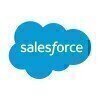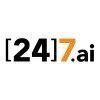
i
Amdocs
Filter interviews by
Amdocs Oracle Database Administrator Interview Questions and Answers
6 Interview questions
SQL is a structured query language used for relational databases, while NoSQL is a non-relational database management system.
SQL is used for structured data with predefined schema, while NoSQL is used for unstructured or semi-structured data.
SQL databases are vertically scalable, while NoSQL databases are horizontally scalable.
SQL databases are ACID compliant, ensuring data integrity, while NoSQL databases sacrifi...
You can change a column in a table using the ALTER TABLE statement in SQL.
Use the ALTER TABLE statement followed by the MODIFY keyword to change the data type or size of a column.
Use the ALTER TABLE statement followed by the ADD or DROP keyword to add or remove a column.
Make sure to specify the table name, column name, and the new data type or size when making changes.
Different types of objects in a database include tables, views, indexes, sequences, and stored procedures.
Tables: Used to store data in rows and columns.
Views: Virtual tables created by a query.
Indexes: Improve the performance of queries by allowing quick access to specific rows.
Sequences: Generate unique numbers.
Stored Procedures: Precompiled SQL code that can be executed with parameters.
Restoring a database using RMAN involves connecting to the target database, restoring the control file, and recovering the database.
Connect to the target database using RMAN
Restore the control file from a backup
Restore the datafiles and tablespaces
Recover the database to bring it to a consistent state
Perform necessary checks and validations after restoration
What people are saying about Amdocs





A materialized view (mview) is a database object that contains the results of a query. Datapump is a tool for moving data between Oracle databases. Oracle GoldenGate is a real-time data integration and replication tool.
Materialized views (mviews) store the results of a query for faster access.
Datapump is a tool used for exporting and importing data between Oracle databases.
Oracle GoldenGate is a real-time data int...
Configuring RAC involves setting up shared storage, network, and database components on multiple nodes.
Configure shared storage using ASM or NFS
Configure network components such as VIP, SCAN, and listener
Install Oracle Grid Infrastructure and Oracle Database software on all nodes
Create a RAC database using DBCA or manually
Configure load balancing and failover using services
Use shell scripting and SQL scripting to ...
Amdocs Oracle Database Administrator Interview Experiences
3 interviews found
(5 Questions)
- Q1. Question about dba
- Q2. Difference Between SQL And nosql
- Ans.
SQL is a structured query language used for relational databases, while NoSQL is a non-relational database management system.
SQL is used for structured data with predefined schema, while NoSQL is used for unstructured or semi-structured data.
SQL databases are vertically scalable, while NoSQL databases are horizontally scalable.
SQL databases are ACID compliant, ensuring data integrity, while NoSQL databases sacrifice so...
- Q3. How to restore the database using rman
- Ans.
Restoring a database using RMAN involves connecting to the target database, restoring the control file, and recovering the database.
Connect to the target database using RMAN
Restore the control file from a backup
Restore the datafiles and tablespaces
Recover the database to bring it to a consistent state
Perform necessary checks and validations after restoration
- Q4. How to change column in table
- Ans.
You can change a column in a table using the ALTER TABLE statement in SQL.
Use the ALTER TABLE statement followed by the MODIFY keyword to change the data type or size of a column.
Use the ALTER TABLE statement followed by the ADD or DROP keyword to add or remove a column.
Make sure to specify the table name, column name, and the new data type or size when making changes.
- Q5. What are different types of objects in database
- Ans.
Different types of objects in a database include tables, views, indexes, sequences, and stored procedures.
Tables: Used to store data in rows and columns.
Views: Virtual tables created by a query.
Indexes: Improve the performance of queries by allowing quick access to specific rows.
Sequences: Generate unique numbers.
Stored Procedures: Precompiled SQL code that can be executed with parameters.
Interview Preparation Tips
Skills evaluated in this interview
I applied via Naukri.com and was interviewed before Mar 2023. There were 2 interview rounds.
(1 Question)
- Q1. What is view synonym mview Explain datapump Oracle goldengate in detail
- Ans.
A materialized view (mview) is a database object that contains the results of a query. Datapump is a tool for moving data between Oracle databases. Oracle GoldenGate is a real-time data integration and replication tool.
Materialized views (mviews) store the results of a query for faster access.
Datapump is a tool used for exporting and importing data between Oracle databases.
Oracle GoldenGate is a real-time data integrat...
(1 Question)
- Q1. What is your goal
I applied via Naukri.com and was interviewed in Jun 2022. There was 1 interview round.
(1 Question)
- Q1. How to configure RAC in detail? Shell scripting SQL scripting
- Ans.
Configuring RAC involves setting up shared storage, network, and database components on multiple nodes.
Configure shared storage using ASM or NFS
Configure network components such as VIP, SCAN, and listener
Install Oracle Grid Infrastructure and Oracle Database software on all nodes
Create a RAC database using DBCA or manually
Configure load balancing and failover using services
Use shell scripting and SQL scripting to autom...
Interview Preparation Tips
If you are giving interview as 3+ years, they will expect that you should posses the expertise 5+ years of experience.
Skills evaluated in this interview
Interview questions from similar companies

Software Engineer Interview Questions & Answers
Microsoft Corporationposted on 16 Sep 2021
I appeared for an interview before Sep 2020.
(1 Question)
Round duration - 50 minutes
Round difficulty - Easy
This was a Data Structural round.
- Q1.
Distinct Islands Problem Statement
Given a two-dimensional array/list consisting of integers 0s and 1s, where 1 represents land and 0 represents water, determine the number of distinct islands. A group of...
- Ans.
Count the number of distinct islands in a 2D array of 0s and 1s.
Identify islands by performing depth-first search (DFS) on the grid
Use a set to store the shape of each island and check for duplicates
Consider translations to determine distinct islands
(1 Question)
Round duration - 50 minutes
Round difficulty - Easy
This was a Data Structural round.
- Q1.
Word Wrap Problem Statement
You are tasked with arranging 'N' words of varying lengths such that each line contains at most 'M' characters, with each word separated by a space. The challenge is to minimiz...
- Ans.
The goal is to minimize the total cost of arranging 'N' words on each line with a maximum character limit 'M'.
Calculate the cost of each line as the cube of extra space characters needed to reach 'M'.
Minimize the total cost by arranging words to fit within the character limit on each line.
Ensure each word appears fully on one line without breaking across lines.
(1 Question)
Round duration - 60 minutes
Round difficulty - Easy
This was a System Design round.
- Q1. Can you design a system similar to Red Bus that can handle bookings and onboard both vendors and customers to the platform?
- Ans.
Design a system similar to Red Bus for handling bookings and onboarding vendors and customers.
Implement a user-friendly interface for customers to search and book tickets
Create a vendor portal for vendors to manage their offerings and availability
Include payment gateway integration for secure transactions
Develop a robust backend system for managing bookings, cancellations, and refunds
Utilize a database to store user in...
Round duration - 50 minutes
Round difficulty - Easy
This was a System Design round
Round duration - 50 minutes
Round difficulty - Easy
This was an HR round.
Interview Preparation Tips
Tip 1 : Practice as much as you can.
Tip 2 : Prepare for company, not in general.
Tip 3 : Your past work should be objective and your contribution should be very clear
Tip 1 : Keep only relevant things for the job you are applying.
Tip 2 : Minimal data with measurable contribution and effect.
Skills evaluated in this interview
What people are saying about Amdocs






I applied via Monster and was interviewed before Apr 2020. There was 1 interview round.
Interview Questionnaire
1 Question
- Q1. Basic java
Interview Preparation Tips

Interview Questionnaire
8 Questions
- Q1. WRITE A GENERIC SWAP FUNCTION
- Ans.
A generic swap function swaps two values of any data type.
The function should take two parameters of any data type.
Use a temporary variable to store the value of one parameter.
Assign the value of the second parameter to the first parameter.
Assign the value of the temporary variable to the second parameter.
- Q2. SEARCH AN ELEMENT IN ROTATED SORTED LINKLIST .
- Ans.
Search for an element in a rotated sorted linked list.
Find the pivot point where the list is rotated.
Divide the list into two sublists based on the pivot point.
Perform binary search on the appropriate sublist.
Handle edge cases such as empty list and list with only one element.
- Q3. SEARCH AN ELEMENT IN ROTATED SORTED ARRAY. WRITED A CODE FOR IT
- Ans.
Search an element in a rotated sorted array
Find the pivot point where the array is rotated
Divide the array into two sub-arrays based on pivot point
Perform binary search on the appropriate sub-array
Repeat until element is found or sub-array size is 1
- Q4. In an Array of size 95 contain numbers in range 1 to 100. each number is at max once in the array. find the 5 missing numbers in array between 1-100
- Q5. Given sudoku as id array of size . in a given empty cell find the possible numbers that could be possible. Asked me to write code for it
- Ans.
Given a Sudoku board, find possible numbers for an empty cell.
Iterate through empty cells and check possible numbers using row, column, and box constraints.
Use a set to keep track of possible numbers for each empty cell.
Return the set of possible numbers for the given empty cell.
- Q6. Given 4 unsigned integers find their integer average (eg. (2,2,2,3) => (2+2+2+3)/4 = 2) consider integer division ) without typecasting
- Ans.
Find integer average of 4 unsigned integers without typecasting
Add all the integers and divide by 4
Use bit shifting to divide by 4
Handle overflow by using long long data type
Use unsigned int data type for input
- Q7. Write a code to identify wheter given processor is of 32 bit architecture or 64 bit architecture
- Ans.
Code to identify 32 bit or 64 bit architecture of a processor
Check if the operating system is 32 bit or 64 bit
If OS is 32 bit, processor is 32 bit
If OS is 64 bit, check if processor supports 64 bit architecture
Use CPUID instruction to check if processor supports 64 bit architecture
- Q8. Convert a binary number into base 64 integer
- Ans.
Convert binary number to base 64 integer
Divide the binary number into groups of 6 bits
Convert each group of 6 bits to decimal
Map the decimal value to the corresponding base 64 character
Concatenate the base 64 characters to form the final integer
Interview Preparation Tips
Experience: SIMPLE CODING QUESTIONS SPEED MATTERS.
Duration: 60 minutes
Total Questions: 3
Skills: Analytics And Coding
College Name: IIT Guwahati
Skills evaluated in this interview

Interview Questionnaire
6 Questions
- Q1. Solving puzzles(25 horses,ant and sweets,height of a building..) try as many as possible before appearing for interview
- Q2. If experienced , then project details of previous companies a must prepare question
- Q3. Writing test cases for random scenarios
- Ans.
Creating test cases for random scenarios ensures software reliability and robustness through diverse input validation.
Identify edge cases: Test with minimum and maximum input values, e.g., an empty array vs. a large array.
Use random data: Generate random inputs to simulate real-world usage, e.g., random user names or passwords.
Test invalid inputs: Ensure the system handles unexpected inputs gracefully, e.g., negative n...
- Q4. Programming in whatsoever language you r comfortable with, basic coding problems of DS,Algos. eg. Zigzag tree traversal algo,random linked list copy
- Q5. Some people asked me questions related to the work i will do if hired in the project
- Q6. Be genuine in ur CV, and be prepared with everything you write there.
Interview Preparation Tips

Interview Preparation Tips
Experience: I had a standard resume for this company as per the norms of our institute’s placement cell. For Oracle I laid emphasis on my programming skills and projects related to it.
Round: Test
Experience: The first round was the written test that comprised of 5 sections – vocabulary, aptitude, pattern matching, logical reasoning and programming. The questions in the programming section were asked from data structures and C++. The questions in the programming section were mainly from trees (from data structures). Around 400 students appeared for their written test out of which around 100 were shortlisted.
Round: HR Interview
Experience: The next round was the interview round. They gave me some puzzles to solve and a program to write. One of the puzzles that I remember was that if I were to be given an egg then how would I determine its durability, i.e. how would I determine that from which floor do I need to throw the egg from so that the egg does not break if thrown from any floor below it.
For the coding question I was given a mathematical formula and I was asked to devise a code such that the program uses the formula and gives the output.
Tips: Prepare for Data Structures as well as the commonly asked puzzles for Oracle.
College Name: IIT ROORKEE
Motivation: Oracle is a reputed company in the space of software and ITeS. It had come to our campus with five profiles. The best means to know about all of them is to attend the pre-placement talk of the company.

Software Engineer Interview Questions & Answers
Microsoft Corporationposted on 15 Nov 2015
I applied via Campus Placement
Interview Questionnaire
2 Questions
- Q1. You have a Binary tree having numbers>=0 and a numeber N. Print all downwards paths from any node having the sum of elements equal to N
- Ans.
Print all downward paths from any node in a binary tree with sum of elements equal to N.
Traverse the binary tree and keep track of the sum of elements in the path from root to current node.
If the sum equals N, print the path from root to current node.
Recursively traverse the left and right subtrees with updated sum.
Use a stack to keep track of the current path being traversed.
Example: Binary tree with root 1, left chil...
- Q2. You have a cuboid (m*n*p) each block of the cuboid is having a metallic ball. Now we are passing X-ray from front face and getting a bool matrix1 of m*p the elements are set if there is a black spot.(as...
- Ans.
Yes, it is possible to get the accurate result from the given data.
The coordinates (i,j,k) where metallic balls are present can be determined by finding the set elements in both matrix1 and matrix2.
Additional data is not required as the given data is sufficient to determine the coordinates.
The coordinates can be obtained by iterating through the elements of matrix1 and matrix2 and checking for set elements.
Interview Preparation Tips
Experience: Output questions
Tips: focus on basics
Duration: 30 minutes
Total Questions: 15
Round: Test
Experience: Two coding problems in one hour,on Cocobues.com
1. Given two arrays of numbers. The numbers are from 0-9 you have two maximize the first array by using the elements from the second array.
the elements can be used only once.
e.g. arr1[]={5,2,3,6,7};
arr2[]={9,2,8,4,5};
You should output the modified arr1 as {9,8,5,6,7}
2.Given a matrix of characters and a word.
you have to count the number of occurences of that word in that matrix. you can move to any of the eight valid directions from current position.
e.g. word="HELLO";
matrix[][5]={ {'H','E','L','L','O'},
{'E','H','E','A','B'},
{'L','L','O','C','D'}};
output should be : 5
Tips: DO AS MUCH AS PRACTICE
Duration: 60 minutes
Total Questions: 2
Round: Test
Experience: One Coding question was given to all the students ,You have to code and explain it.
You are given an string as input which represents a path. You have to normalize that path inplace(NO EXTRA SPACE).
e.g.
input : "\a\b\c\..\..\file.txt"
output: "\a\file.txt"
Hint: Double dot(..) means you have to skip the previous parent.
It was on paper.
Duration: 40 minutes
Total Questions: 1
Round: Technical Interview
Experience: The interviewer was very nice that was an amazing experience.
Tips: Be confident and relaxed.
Round: HR Interview
Experience: Again the interviewer was very nice. Firstly he asked me what i have done in technical till that time.
After the interview was over he looks impressed.
Tips: Don't see what others are doing . Take your time and try to short out the correct solution.
General Tips: Do coding as much as you can
Skills: Algorithm, Coding Skills And Knowledge On Data Structures
Duration: 2
College Name: NIT Bhopal
Motivation: It comes to our institute, and the name Microsoft is sufficient for motivation.
Funny Moments: The journey to Microsoft IDC Hydrabad was very beautiful.
Skills evaluated in this interview

Software Engineer Interview Questions & Answers
Microsoft Corporationposted on 15 Nov 2015
Interview Questionnaire
2 Questions
- Q1. Write the backend server code for a tic tac toe game
- Ans.
Backend server code for a tic tac toe game
Create a RESTful API using a framework like Express.js
Implement game logic to check for winning conditions
Use a database to store game state and user information
Handle user authentication and authorization
Implement real-time updates using WebSockets
- Q2. Write a program to store a tree on a file. Also write code to reconstruct the tree from that file. Think of efficient techniques
- Ans.
Program to store and reconstruct a tree from a file with efficient techniques.
Use a recursive approach to traverse the tree and write each node to the file
Include information about the node's parent and children in the file
Use a unique identifier for each node to reconstruct the tree from the file
Use a data structure like a hash table to store the nodes and their identifiers for efficient reconstruction
Interview Preparation Tips
Experience: All types of C/C++ Aptitude and I/O questions were asked.
Was not a very easy round.
Tips: Prepare from -----/ and -----/
I had done everything in these 2 links.
Other than that, you can prepare from "Test your C Skills" by Yeshwant Kanetkar. PDF available online.
Duration: 30 minutes
Total Questions: 40-50
Round: Test
Experience: Two coding questions were asked. It was hosted on CoCubes website.
Questions were pretty basic.
First one was ad-hoc, requiring to count the number of set bits of a number.
Second one was the standard, minimum cost path DP problem.
Tips: Prepare from geeksforgeeks, careercup and ambitionbox.
If you know competitive programming, you should not have much of a problem.
Duration: 90 minutes
Total Questions: 2
Round: Test
Experience: Had to write code on paper. 2 questions.
First one was to rotate a matrix by 90 degrees. Pretty standard question.
Second one was to remove all negative elements in an array to the right end. Do it without extra memory.
Tips: Apart from correctness of solution, they check for code quality. Code written must be clean, indented and with properly named variables and functions.
Keep communicating your ideas to the people who will be supervising the test. They will understand your thought process that way.
Duration: 60 minutes
Total Questions: 2
Round: Technical Interview
Experience: Wrote the class in JAVA. Explained the methods, and optimized them. Variables were named properly.
Also generalized the class for an nxn matrix tic-tac-toe game.
Interviewer was very friendly. Wrote the code on paper.
Tips: Prepare on class design beforehand. They are quite likely to ask you questions on OOP.
Write clean code.
Round: Technical Interview
Experience: Just had to write the functions. Wrote code in C++.
The interviewer tested me on edge cases. Asked me to prepare test cases.
Tips: Make sure your code is ready to tackle those dirty edge cases.
Knowing standard library functions is beneficial. Make sure you learn some important ones. They can come in handy.
Write clean code. You can choose any language you are comfortable in.
General Tips: Stay calm. Prepare well.
Focus on the data structures that Microsoft usually asks about.
Skill Tips: A good internship helps in the process. I had interned at Google, so I got selected relatively easily as compared to other candidates. Make sure your resume is as impressive as you can make it.
Stay calm in the rounds. That way you can think better.
Communicate with the company officials. They will know you and your thought process that way.
Don't stay quiet in the interview rounds. If you have doubts, ask them. I had made this mistake when they came for internships and did not get selected because I didn't clear my doubts. The interview should be ideally like a discussion, where you present your thoughts and ideas, clear your doubts, and come up with a solution.
Skills: Resume, Communication, Analytical Skills, Algorithmic Approach To Problem Solving, Coding Skills And Knowledge On Data Structures
College Name: NIT Surathkal
Motivation: It is one of the biggest tech giants in the world. I definitely wanted to be a part of it.
Funny Moments: Since I had only 2 interviews, while others had 5, I came out so early that they thought I was rejected.
They later discovered, they were wrong.
Skills evaluated in this interview
Amdocs Interview FAQs
Tell us how to improve this page.
Amdocs Interviews By Designations
- Amdocs Software Developer Interview Questions
- Amdocs Associate Software Engineer Interview Questions
- Amdocs Software Engineer Interview Questions
- Amdocs Functional Test Engineer Interview Questions
- Amdocs Softwaretest Engineer Interview Questions
- Amdocs RF Engineer Interview Questions
- Amdocs Senior Software Engineer Interview Questions
- Amdocs Devops Engineer Interview Questions
- Show more
Interview Questions for Popular Designations
- Software Engineer Interview Questions
- SQL Database Administrator Interview Questions
- Lead Administrator Interview Questions
- Senior Database Administrator Interview Questions
- Hadoop Administrator Interview Questions
- Database Engineer Interview Questions
- SQL Server Database Administrator Interview Questions
- Oracle Application Database Administrator Interview Questions
- Show more
Overall Interview Experience Rating
based on 2 interview experiences
Difficulty level
Duration
Interview Questions from Similar Companies
Amdocs Oracle Database Administrator Reviews and Ratings
based on 10 reviews
Rating in categories
|
Software Developer
8.5k
salaries
| ₹9 L/yr - ₹15.5 L/yr |
|
Software Engineer
2k
salaries
| ₹6.8 L/yr - ₹16.2 L/yr |
|
Softwaretest Engineer
1.8k
salaries
| ₹5.8 L/yr - ₹13.8 L/yr |
|
Functional Test Engineer
1.2k
salaries
| ₹5 L/yr - ₹12.2 L/yr |
|
Associate Software Engineer
946
salaries
| ₹4.8 L/yr - ₹10 L/yr |

TCS

IBM

Oracle

Carelon Global Solutions
- Home >
- Interviews >
- Amdocs Interview Questions














